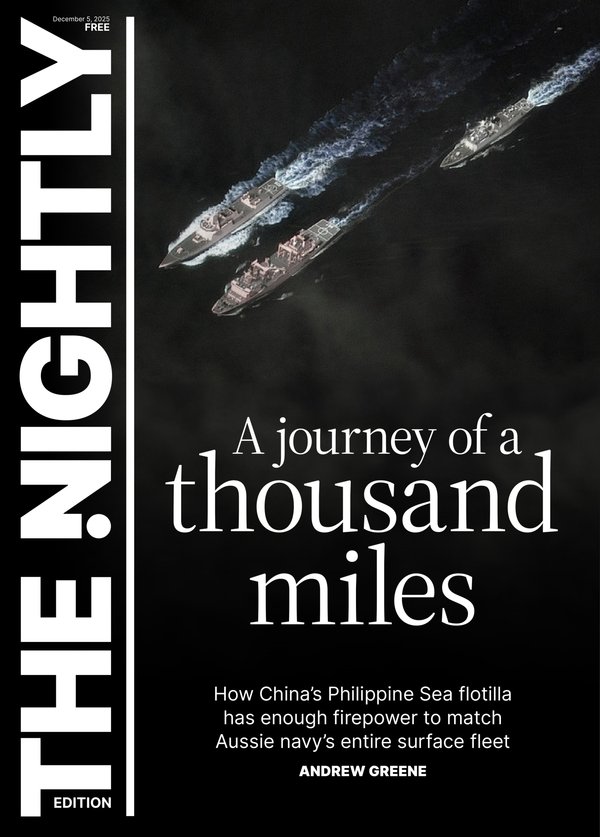Hulk Hogan, the shirt-shredding superstar of pro wrestling, dies at 71
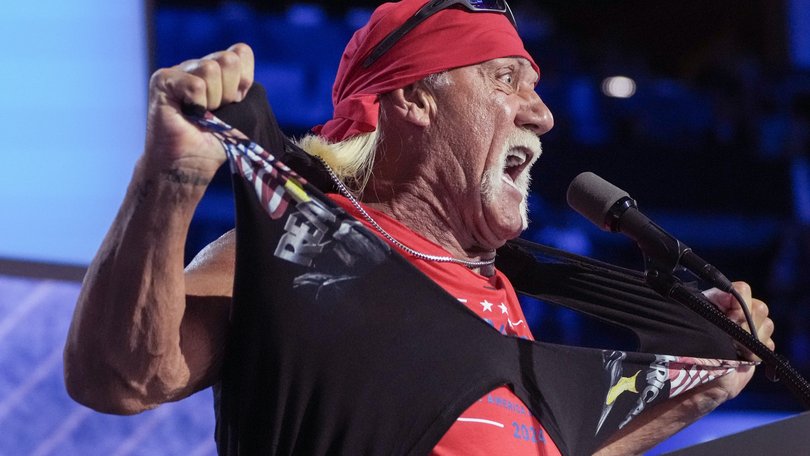
Hulk Hogan, whose flamboyance and star power helped transform professional wrestling from a low-budget regional attraction into a multibillion dollar industry, died Thursday in Clearwater, Florida. He was 71.
Police and fire department personnel in Clearwater were called to Hogan’s home on Clearwater Beach, where Hogan was treated for cardiac arrest, the police said in a “news alert” post on Facebook. He was taken to nearby hospital, where he was pronounced dead, they said.
Hogan was the face of pro wrestling for decades, with his blond hair and horseshoe mustache, colorful bandannas and massive biceps, which he referred to as “24-inch pythons.”
Sign up to The Nightly's newsletters.
Get the first look at the digital newspaper, curated daily stories and breaking headlines delivered to your inbox.
By continuing you agree to our Terms and Privacy Policy.Even after his wrestling days were over, he remained in the spotlight, most recently when he spoke last year at the Republican National Convention in Milwaukee, tearing off his shirt to reveal a Trump/Vance shirt underneath. He was earlier involved in a high-profile lawsuit in 2012, bankrolled by billionaire Peter Thiel, against Gawker, the irreverent media company, after Gawker posted a video of Hogan having sex with a friend’s wife. He won the case on invasion of privacy grounds, reaping millions in damages.
Hogan’s routine before a wrestling match was guaranteed to send fans into a frenzy. He would cup his hand to his ear to encourage the roaring crowd and tear off his shirt, which was pre-ripped to ease the process. Fans loved him as much for his charm and physique as for his old-fashioned grappling ability.
Hogan was born Terry Gene Bollea, on August 11, 1953, in Augusta, Georgia. His father, Peter Bollea, was a construction foreman; his mother, Ruth (Moody) Bollea, was a dance teacher. He attended the University of South Florida but dropped out, choosing the wrestling mat over the classroom.
He started wrestling in 1977. Like many in the sport, he was a big man, weighing 300 pounds (136kg) in his prime. He was also exceptionally tall, 6-foot-8, helping to further a trend toward very big men in wrestling.
He adopted the name “Hulk” because of comparisons to the muscular comic book character on the CBS television program The Incredible Hulk. In 1979, he made it to the World Wrestling Federation (now World Wrestling Entertainment) and took on the alliterative last name Hogan.
Those were the days when wrestling’s good guys, or “faces,” were clean-cut all-American types, and a savvy fan could guess that a wrestler was going to turn bad by noticing his hair grow a little longer. In that environment, the longhaired, edgier Hogan clearly fit the bad guy, or “heel,” mode. He developed a rivalry with champion Bob Backlund, a traditional Midwestern milk-drinking good guy.
Hogan catapulted to greater fame after appearing in the movie “Rocky III” in 1982. He played a wrestler, Thunderlips, who takes on Rocky (Sylvester Stallone) in a charity wrestler-versus-boxer match. The preening, egotistic Thunderlips batters an unprepared Rocky, throwing him out of the ring and into the crowd. Despite his brief screen time, Hogan created a character that stuck in viewers’ minds, no mean feat in a film that also starred the bombastic Mr. T.
After a brief time away, Hogan returned to the WWF in 1983. His popularity had grown so great that it seemed clear he was destined to be a good guy, despite his less-than-button-down appearance. His rebranding helped pave the way for broadening the face category to include all types of wrestlers.
Not every hardcore wrestling fan warmed to Hogan. Some considered his main strength to be showmanship rather than wrestling ability. He was named most overrated wrestler by the insider magazine Wrestling Observer several times in his career. But the bulk of wrestling fandom was hardly concerned about a supposed lack of technical prowess and got on board with the phenomenon that became known as Hulkamania.
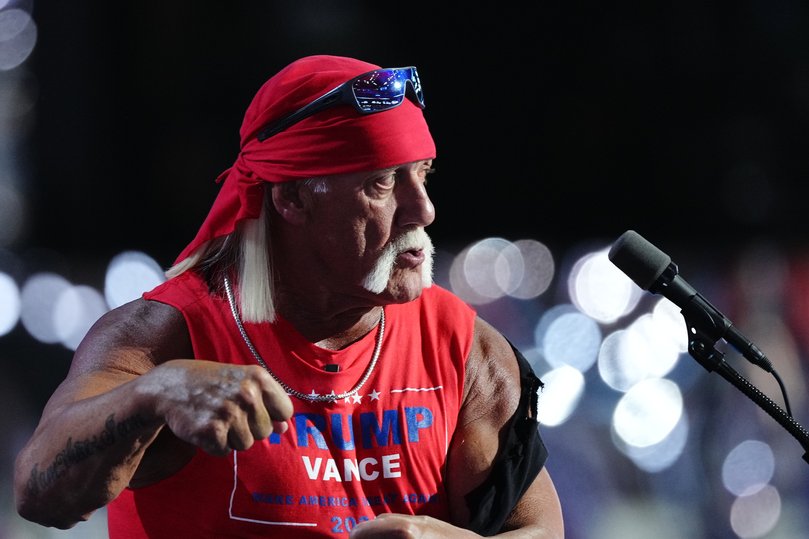
“In blasé Manhattan, where the likes of Jackie O. and Mr. T have been observed walking the streets unhindered,” The New York Times wrote in 1984, “Hulk Hogan cannot go 10 feet.”
The WWF gave Hogan a patriotic persona: He developed rivalries with the Iron Sheik and Nikolai Volkoff, who represented the United States’ global rivals Iran and the Soviet Union (never mind that Volkoff was actually Croatian). Hogan started arriving at matches accompanied by the song Real American by Rick Derringer and began urging fans to take their vitamins.
Despite that exhortation, he admitted in 1994 that his physique was partly the result of taking steroids.
Hogan held the WWF’s title belt many times over the years, including a four-year stretch in the mid-1980s, an epic period of dominance in an ever-changing sport.
He regularly filled arenas around the country, and big events at which he was the headliner, like WrestleMania, could easily fill stadiums.
The thousands in the stands eagerly awaited a Hogan victory, which often involved “Hulking up”: A seemingly defeated Hogan would turn things around by absorbing the blows of his opponent, each one somehow making him stronger. Hogan’s finishing move was often the leg drop, in which he would bounce off the rope, leap in the air and land, leg first, on a prone opponent. Few foes lasted long after that move.
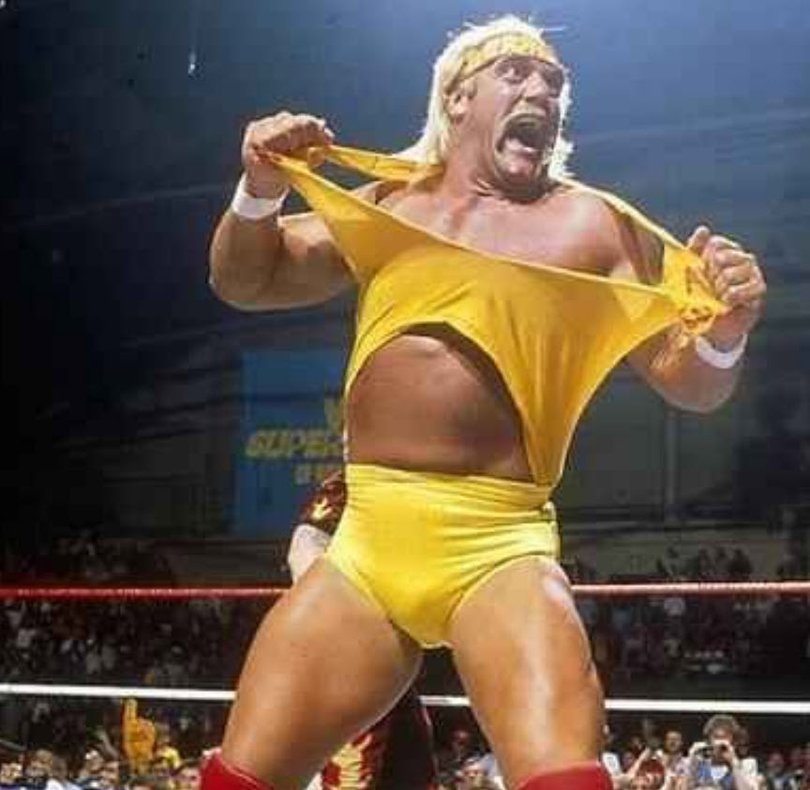
Wrestling stardom is never just about in-ring performance, and Hogan excelled in another key area: on-camera interviews. He would appear to be in a passionate frenzy, but remained controlled beneath the surface, delivering the story line of the day. A trademark was calling the audience “brother” in a gravelly voice.
After winning the title in 1984, Hogan told interviewer Gene Okerlund: “It is the dream of a lifetime, daddy. This is like going to the mountaintop 1,000 times over. I feel the energy. Hulkamania’s running worldwide!”
Shortly afterward, he was doused in champagne by Andre the Giant. But their friendship would not last forever.
In 1987, in perhaps Hogan’s most memorable match, at the height of Hulkamania, he was matched up against Andre at WrestleMania III, at the Silverdome in Michigan. Andre, a longtime fan favourite, had recently turned heel.
Andre was said not to have lost in the ring for 15 years. But Hogan defeated him. The result of the match, like all pro-wrestling bouts, was predetermined, but that did not diminish the impact of the bout’s biggest moment: Hogan body slammed the 500-pound Andre.
Hogan had hit peak stardom, and crossed over into starring in movies. He played a wrestler in No Holds Barred (1989) and an ex-wrestler-turned-caregiver in Mr. Nanny (1993). He also starred as a mercenary in the television series Thunder in Paradise.
Once his film and television career began to fade, Hogan moved to World Championship Wrestling in 1994 and developed a whole new set of rivalries, including one with Ric Flair, the dominant wrestler for years in that organization. Wrestling mostly as a heel, Hogan formed a group of wrestlers called the New World Order and called himself “Hollywood” Hogan.
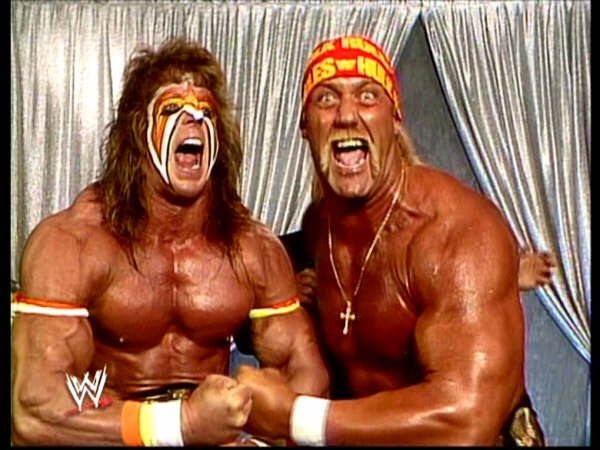
He returned to the newly renamed WWE in 2002, and later left and returned several more times, wrestling for other companies in between.
In 2005, he appeared in the reality series Hogan Knows Best, along with his wife at the time, Linda (Claridge) Hogan, and his children, Brooke (Hogan) Oleksy, a singer, and Nick Hogan, a race car driver. They survive him, along with his third wife, Sky Daily, and two grandchildren.
He was in the public eye in a less savoury way in 2012, during his lawsuit against Gawker, backed by Thiel, the Republican political patron, whom the site had outed as gay a decade earlier.
Hogan contended that by posting the video, Gawker had invaded his privacy; Gawker said it was newsworthy. A jury sided with Hogan, awarding him $US140 million ($210m) in 2016; the case was eventually settled for $US31 million, and Gawker Media filed for bankruptcy.
In 2015, a tape of Hogan using racial slurs emerged. He apologized, but was dismissed from the WWE. He returned to WWE shows in 2018.
Throughout the craziness of Hulkamania, Hogan said he tried to maintain normalcy. “The moment I come home, the headband comes off the bald head, and it’s just Terry: dad, father, husband, friend,” he told the talk show The 700 Club in 2024.
“The problem is, the moment I leave the house, the moment I walk out the front door, the world doesn’t want Terry. The mailman goes, ‘Hey, Hulk.’ So instead of saying ‘Good morning, sir,’ I say, ‘Hey, brother, how you doing?’”
This article originally appeared in The New York Times.
© 2025 The New York Times Company
Originally published on The New York Times
